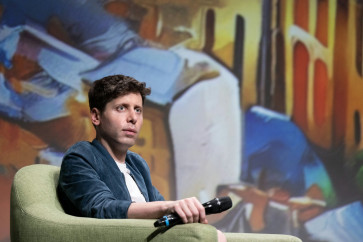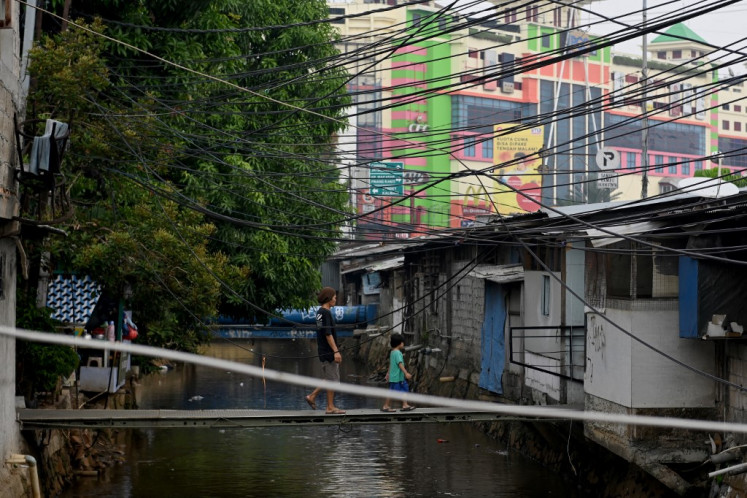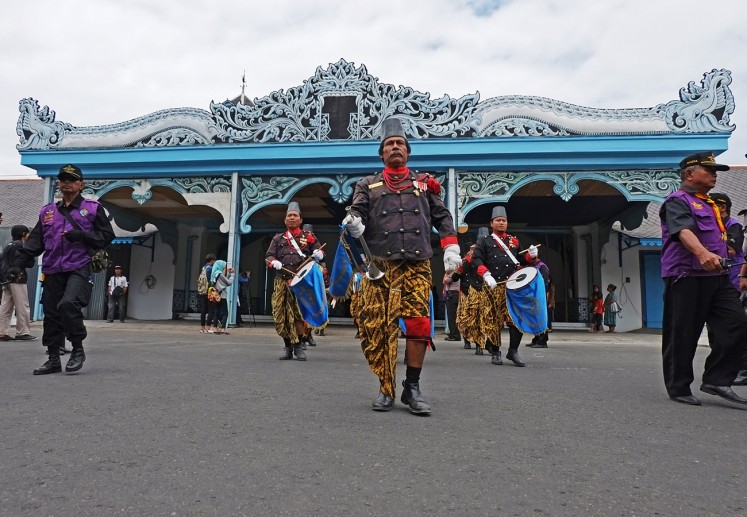‘In Search of a Dream’: multicultural performance piece straddles dreams and reality
Posture: Dancer Didik Nini Thowok (left) performs in a play titled In Search of a Dream
Change text size
Gift Premium Articles
to Anyone

Posture: Dancer Didik Nini Thowok (left) performs in a play titled In Search of a Dream.
After visiting Yogyakarta and Denpasar, Danny Yung’s eclectic experimental theater In Search of a Dream finally made its way to Jakarta for a one-night performance at Salihara art community center on Nov. 22.
The play involved artists from seven Asian countries: Chaohsin (Taiwan), Makoto Matsushima (Japan), Nget Rady (Cambodia), Soultari Amin Farid (Singapore), Jason Kong (Hong Kong), Sabrina Sng (Singapore), Nattapon Wannaun (Thailand) and Indonesia’s own Didi Nini Thowok.
In Search of a Dream is part of Yung’s The Interrupted Dream Series, which premiered in Hong Kong in 2018. Like the previous part in the series, Journey to a Dream, In Search of a Dream is built upon the Ming Dynasty-era tragic romance-comedy play The Peony Pavilion.
In the original play, the script follows main character Du Liniang and her romantic adventures in the dream world. In Search of a Dream follows that influence by having a man laid out on the floor, apparently unconscious and dreaming amid a background noise of marching people.
Another man comes out to put a white sheet over the body, as if covering a corpse.
While Du Liniang does waste away from despondency after waking up, the scene seems to suggest that there is a fine line between dreaming and the eternal sleep.
A highlight of the work was indeed the cross-cultural aspect, which was manifested in not only the performers but also the play itself.

A scene in In Search of a Dream brought in masked performers wearing pseudo-historical dresses and wigs, echoing the court of Versailles’ obsession with exotic depictions of Chinese culture during the reign of Louis XIV. This scene was also arguably the most surreal of the play, with the masked performers in female dress being joined by ordinarily dressed men who performed voguing-like moves that conjured visions of Harlem ballrooms rather than Parisian ones.
That all of this was going on while the unconscious, apparently deceased man was still in his original position with the only change being a chair over his body is probably an imagery you can only cook up in a fevered dream.
At some point, a man’s hysterical laughter permeated the scene, which quickly turned into hysterical crying as soon as the lights went out, likely suggesting that dreaming is sometimes better than waking.
Also of note was the exploration of gender and sexuality, which cropped up in the sometimes nonsensical announcements often repeated during the course of the play.
The announcements started off innocuously enough, as if welcoming the audience into a cultural center.
However, they soon turned into welcoming the audience to France, where the apparent program being announced was what seemed to be anthropology through sex-related terms, before thanking them for their cooperation.
Amid such lines like “we study orgies of a civic society in order to find out the origin of its orgasms”, some choices of words seemed to mark a blatant criticism of perceived societal failures such as “democratic postures which are dominated by the promiscuous pseudo-intellectuals who justify their superiority complex”.

In the same breath, the announcement blasted freedom of speech by drily noting that it was characterized by “fallen morality, blatant nakedness and seduction”, while also announcing that it was studying “the scattered ruins left by the evil and avaricious pursuits of humanity in the face of insatiable desires and moral battlegrounds”.
Despite the sometimes blatant, in-your-face message of the announcements, everything else could be unpacked individually by the audience.
Yung himself said that he was very open to every interpretation, while explaining that the phrase “thank you for your cooperation” was a staple in every cultural center.
“So, what is there to cooperate? I imagine a center without a center, or a center without gravity. We’re always concerned about cultural centers; can this really be a center for culture,” Yung said.
Associate director Liu Xiaoyi noted that the usage of the 17th century imagery was related to the common point of view of Asian cultures, which often came from a Western standpoint or the Western gaze.
“I think in this production it’s quite different because the Asian artists on stage are playing the Western playing the Asian, which is creating another layer that is commenting on the Western gaze,” he said.
Yung added that mockery was always part of cultural exchange through stereotyping, and the French scene was inspired by the Versailles court pretending to be Chinese performers as part of Louis XIV’s fascination with the East.
“What we’re thinking of is seeing how people see other people, and then by doing that we interpret how people interpret the people. [...] In a way, it’s about the postcolonial concept about how the West looks at the East and how we look at the West looking at the East.”

— Photos by JP/Wienda Parwitasari.









